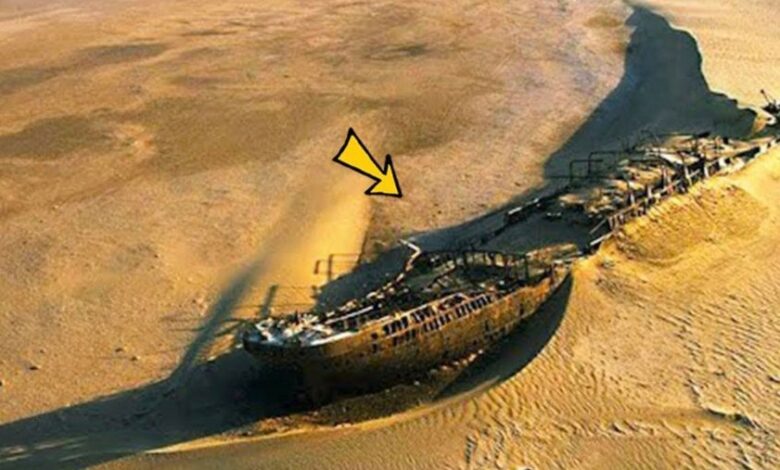A long-lost gold-laden ship was discovered in the desert.

One of the most spectacular archeological discoveries in recent years has been the recovery of a ship in a southwest African desert that went missing five centuries ago and had gold coins on board.
The departure of a Portuguese warship from Lisbon took place on March 7, 1533. Its whereabouts remained unknown until 2008, when its bones were discovered while diamond mining along the coast of Namibia.
As it traveled towards India, a strong storm caused it to capsize, taking riches such as copper and gold ingots with it. On board the ship, two thousand pieces of pure gold and tens of thousands of pounds of copper ingots were recovered, practically all of which were found intact.

In addition to cash, the ship located in the desert held a large cargo.
According to Dr. Noli, senior archaeologist of the Southern Africa Institute of Maritime Archaeological Research, the discovery of a shipwreck is not surprising, considering storms have recently been known to lash the beach.
However, after only one week of digging, a treasure chest containing gold money was discovered, and the coins within revealed that it had originated from a Portuguese ship that had gone missing in 1533.
The ship is said to have sunk during a storm off the coast of Namibia when it was dragged too close to shore, forcing the hull to connect with a rock and tip over. It reappeared in the desert when the waters off the shore retreated.
With the exception of a few single bone pieces, the ship’s state upon finding indicates that the storm that caused the disaster was extraordinarily severe; yet, the lack of human remains indicates that the majority of the crew either drowned at sea or managed to escape the wreck.
“It gives new meaning to the concept of the ship being loaded with gold,” Dr. Noli told Australia’s News Com.
Further study showed the existence of bronze bowls, and the long metal poles were finally identified as canons.
In addition to the musket, which they believed to be at least 500 years old, Dr. Noli’s team discovered metal fragments that showed a shipwreck was hidden in the sand. There were cannons, swords, astrological instruments, compasses, and even a time capsule discovered. Silver coins were also discovered.
Dr. Noli and other experts think the ship was heading from its home port in Lisbon, Portugal, across the southern edge of Africa, towards Western India, based on the contents of the disaster.
At the period, similar Portuguese ships carrying the same cargo frequently took this route.
The Bom Jesus is now the most precious and ancient shipwreck discovered off Sub-Saharan Africa’s western coast.
The area where the ship was discovered was known as Sperrgebiet, or “forbidden territory,” since it had been explored by hundreds of German prospectors hunting for diamonds.
According to CNN, the facility, which is the product of a collaboration between the Namibian government and the diamond corporation DeBeers, is still mostly submerged.
The shipwreck’s remains are presently guarded by mine security and are only available to a select group of people. A museum concept has been discussed, however it is unclear whether it will be realized.




